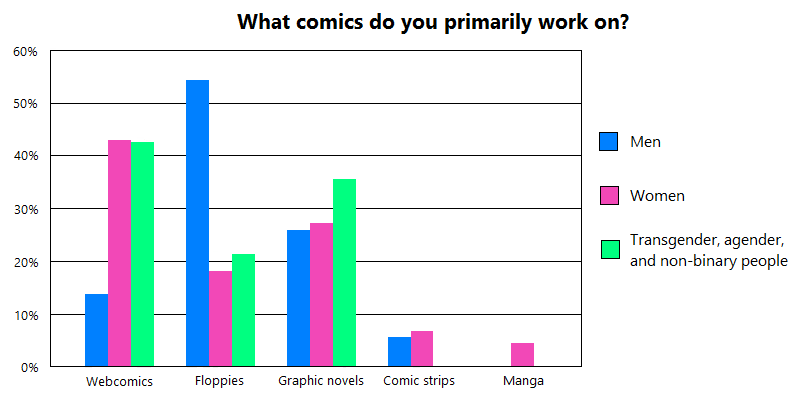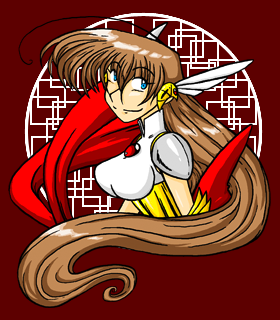Gender and webcomics on:
[Wikipedia]
[Google]
[Amazon]
 In contrast with mainstream American comics, webcomics are primarily written and drawn by women and gender variant people. Because of the self-published nature of webcomics, the internet has become a successful platform for social commentary, as well as
In contrast with mainstream American comics, webcomics are primarily written and drawn by women and gender variant people. Because of the self-published nature of webcomics, the internet has become a successful platform for social commentary, as well as
 There exist a large amount of openly gay and lesbian comic creators that self-publish their work on the internet. These include amateur works, as well as more "mainstream" works, such as ''
There exist a large amount of openly gay and lesbian comic creators that self-publish their work on the internet. These include amateur works, as well as more "mainstream" works, such as ''
lesbian
A lesbian is a Homosexuality, homosexual woman.Zimmerman, p. 453. The word is also used for women in relation to their sexual identity or sexual behavior, regardless of sexual orientation, or as an adjective to characterize or associate n ...
, gay, bisexual
Bisexuality is a romantic or sexual attraction or behavior toward both males and females, or to more than one gender. It may also be defined to include romantic or sexual attraction to people regardless of their sex or gender identity, whi ...
, and transgender ( LGBT) expression.
Statistics
A 2015 study by David Harper concluded that webcomics were vastly more popular format to female, transgender, and non-binary comic artists than for men. More than 40% of the women, transgender, and non-binary comic artists reported to work primarily in webcomics in this study, while only 15% of men did. Harper suggested that this may be because the self-published nature of webcomics form a lower barrier to entry, while traditional mediums such ascomic books
A comic book, also called comicbook, comic magazine or (in the United Kingdom and Ireland) simply comic, is a publication that consists of comics art in the form of sequential juxtaposed panels that represent individual scenes. Panels are of ...
are gatekept by cisgender men, though he also suggested that this disparity may just be a difference in interest between the groups.
According to a study by Erik Melander in 2005, at least 25% of webcomic creators were female. This percentage was significantly larger than the number of successful women creating print comics at the time, and the number may have been even higher, as a certain percentage of contributors were unknown. In 2015, 63% of the top 30 comic creators on webcomic conglomerate Tapastic were female. In 2016, 42% of the webcomic creators on WEBTOON were female, as was 50% of its 6 million active daily readers.
Women in webcomics
''Girls with Slingshots
''Girls With Slingshots'' is a completed webcomic series by Danielle Corsetto that premiered on September 29, 2004. The series follows several friends as they deal with life events like unemployment, marriage, and their sexuality. Corsetto self-pu ...
'' creator Danielle Corsetto stated that webcomics are probably a female-dominated field because there is no need to go through an established publisher. ND Stevenson, creator of ''Nimona
''Nimona'' is a fantasy graphic novel by ND Stevenson, an American cartoonist. The story follows Nimona, a shapeshifter who joins the villain Ballister Blackheart in his plans to destroy the over-controlling Institute. Blackheart tries to oper ...
'' and '' Lumberjanes'', noticed that webcomics predominantly feature female protagonists, possibly to "balance out" the content of mainstream media. Corsetto noted that she has never encountered sexism during her career, though Stevenson described some negative experiences with Reddit and 4Chan
4chan is an anonymous English-language imageboard website. Launched by Christopher "moot" Poole in October 2003, the site hosts boards dedicated to a wide variety of topics, from anime and manga to video games, cooking, weapons, television, ...
, websites outside of their usual channels.
Oliver Sava of '' The A.V. Club'' pointed out in 2016 that there exists a growing community of black women cartoonists creating webcomics.
In India, where rape of women has been a big issue in the 2010s, Indian webcomics
Webcomics have grown in popularity in India since the early 2000s. Early webcomics created by Indian people were written and illustrated by people abroad and focused primarily on the differences in culture the creators experienced. Later webcomics ...
formed a platform for artists to poke fun at patriarchy
Patriarchy is a social system in which positions of dominance and privilege are primarily held by men. It is used, both as a technical anthropological term for families or clans controlled by the father or eldest male or group of males a ...
, feminism, and various other gender-related topics. According to human rights activist and webcomic creator Rachita Taneja, humor aids in communicating complex subjects to large groups of people, and the inclusiveness of webcomics makes it an excellent medium for said communication.
Girlamatic was a subscriber-based webcomic site founded by Joey Manley in 2003. The website's purpose was to syndicate webcomics created primarily by women and marketed primarily to women. Girlamatic included webcomics created by various well-known female webcomic artists, including Shaenon Garrity and Lea Hernandez. The syndicate had won various Lulu awards for being among the "most women-friendly and reader- friendly work in comics." Writing for ''Comixpedia'', Eric Burns voiced his worries that initiatives like Girlamatic section off and divide the webcomic community, making it ''less'' likely for male readers to come across the works of female webcartoonists.
LGBT in webcomics
 There exist a large amount of openly gay and lesbian comic creators that self-publish their work on the internet. These include amateur works, as well as more "mainstream" works, such as ''
There exist a large amount of openly gay and lesbian comic creators that self-publish their work on the internet. These include amateur works, as well as more "mainstream" works, such as ''Kyle's Bed & Breakfast
''Kyle's Bed & Breakfast'' is a syndicated comic strip by Greg Fox. The setting is a gay bed & breakfast in the town of Northport, New York, on Long Island. It features a diverse cast of regularly appearing characters, and guests who contribute ...
''. According to Andrew Wheeler from '' Comics Alliance'', webcomics "provide a platform to so many queer voices that might otherwise go undiscovered," and Tash Wolfe of '' The Mary Sue'' has a similar outlook on transgender artists and themes.
See also
* Women in comics * Sexism in American comics *List of LGBT-related webcomics
This is a list of some of the many webcomics featuring lesbian, gay, bisexual, transgender, or otherwise LGBTQ content.
LGBTQ+ themes and characters were historically omitted intentionally from the content of comic strips and comic books, due t ...
References
{{Webcomics Webcomics LGBT portrayals in mass media Webcomics Women and comics